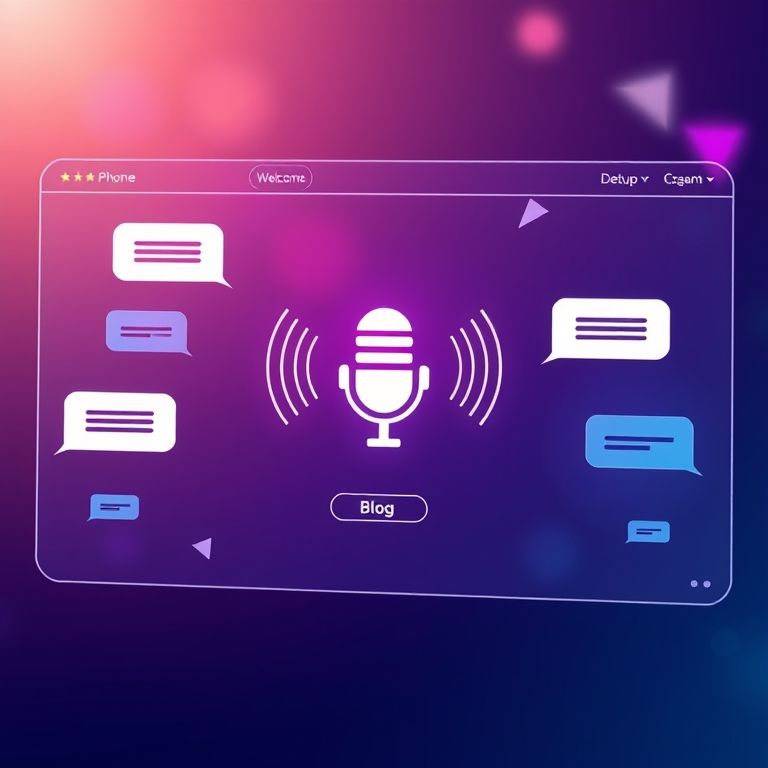
28
AI Voice Assistant Integration on Website: The 2025 Guide
Discover how AI voice assistant integration on your website can boost engagement, accessibility, and customer support in 2025—with simple steps and top tools.
Voice technology is changing how customers interact online. In 2025, AI voice assistant integration on website isn’t just a “nice to have”—it’s a powerful way to enhance user experience, boost engagement, and make your site more accessible. This guide shows you why and how to add a voice assistant to your site, including tools, benefits, and setup steps.
Why Add an AI Voice Assistant to Your Website?
1. Enhanced User Experience
- Users can ask questions, search, and navigate hands-free.
- Faster, more natural communication—great for mobile and multitasking.
2. Improved Accessibility
- Helps users with visual impairments or disabilities engage with your content.
- Makes your website WCAG- and ADA-friendly.
3. Better Customer Support
- AI voice bots answer FAQs, guide visitors, and qualify leads 24/7.
- Reduces support workload and increases satisfaction.
4. Higher Engagement and Conversions
- Voice search and commands make it easier for users to find products, content, or complete actions—driving sales and interaction.
Top Tools for AI Voice Assistant Integration on Website (2025)
1. Google Dialogflow CX
- Powerful conversational AI platform for voice and chatbots.
- Supports speech-to-text, multilingual support, rich integrations.
- Dialogflow CX
2. Microsoft Azure Bot Service + Speech
- Integrate AI voice bots with your site using Microsoft’s cloud.
- Real-time speech recognition, language understanding, and easy web integration.
- Azure Bot Service
3. Web Speech API (Browser-Based)
- Free, native browser API for adding basic voice recognition and speech synthesis.
- Works well for simple voice navigation or commands.
- Web Speech API Guide
4. Alan AI
- Embeddable voice assistant SDK for websites and apps.
- Pre-built integrations for e-commerce, SaaS, and custom flows.
- Alan AI
5. Amazon Lex
- Scalable conversational AI with advanced voice capabilities.
- Seamless integration with AWS and web applications.
- Amazon Lex
How to Integrate an AI Voice Assistant on Your Website
Step 1: Choose the Right Platform
Decide if you want a ready-made SDK (like Alan AI) or a fully custom build with Dialogflow, Azure, or Lex.
Step 2: Design Your Conversational Flows
- Map out user intents (FAQ, product search, booking, etc.).
- Prepare scripts for the most common questions and actions.
Step 3: Set Up Speech Recognition & Synthesis
- Enable speech-to-text for user input.
- Set up text-to-speech for the AI’s voice responses.
Step 4: Embed on Your Website
- Use SDKs, JavaScript snippets, or custom integrations.
- Place the voice assistant widget/button where it’s easily visible.
Step 5: Test, Optimize, and Launch
- Test on all devices and browsers.
- Refine conversation flows and add new features based on user feedback.
Image: “Modern website homepage with a floating AI voice assistant button” (alt: AI voice assistant integration on website 2025 example)
Real-World Example
A travel booking website integrated Alan AI’s voice assistant for bookings and FAQ. Within three months, voice engagement increased by 37%, and customer support requests dropped by 22% (source).
Internal Links
- Best Free AI Chatbot for Website Integration
- AI Chatbot Platforms Comparison 2025
- How to Integrate AI Chatbot in WordPress
Conclusion
AI voice assistant integration on your website isn’t just future-proof—it’s a competitive advantage. Make your site more accessible, engaging, and user-friendly with conversational AI. Choose a platform, design your flows, and start welcoming visitors with the power of voice in 2025.
Contact
Missing something?
Feel free to request missing tools or give some feedback using our contact form.
Contact Us